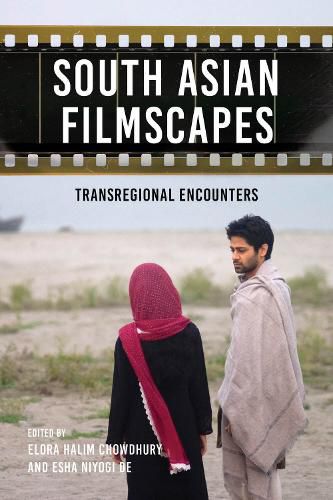Readings Newsletter
Become a Readings Member to make your shopping experience even easier.
Sign in or sign up for free!
You’re not far away from qualifying for FREE standard shipping within Australia
You’ve qualified for FREE standard shipping within Australia
The cart is loading…






In South Asia massive anticolonial movements in the twentieth century created nation-states and reset national borders, forming the basis for emerging film cultures. Following the upheaval of the partition of India and Pakistan in 1947 and the Bangladesh Liberation War of 1971, new national cinemas promoted and reinforced prevailing hierarches of identity and belonging. At the same time, industrial and independent cinemas contributed to remarkably porous and hybrid film cultures, reflecting the intertwining of South Asian histories and their reciprocal cultural influences. This cross-fertilization within South Asian cultural production continues today.
South Asian Filmscapes excavates these complex politics and poetics of bordered identity and crossings through selected histories of cinema in South Asia. Several essays reveal ways in which fixed notions of national identity have been destabilized by the cross-border mobility of filmed arts and practitioners, while others interrogate how filmic politics intersects with discourses of nationalism, sexuality and gender, religion, and language. Together, they offer a fluid approach to the multiple histories and encounters that conjure South Asia as a geographic and political entity in the region and globally through a cinematic imagination.
$9.00 standard shipping within Australia
FREE standard shipping within Australia for orders over $100.00
Express & International shipping calculated at checkout
In South Asia massive anticolonial movements in the twentieth century created nation-states and reset national borders, forming the basis for emerging film cultures. Following the upheaval of the partition of India and Pakistan in 1947 and the Bangladesh Liberation War of 1971, new national cinemas promoted and reinforced prevailing hierarches of identity and belonging. At the same time, industrial and independent cinemas contributed to remarkably porous and hybrid film cultures, reflecting the intertwining of South Asian histories and their reciprocal cultural influences. This cross-fertilization within South Asian cultural production continues today.
South Asian Filmscapes excavates these complex politics and poetics of bordered identity and crossings through selected histories of cinema in South Asia. Several essays reveal ways in which fixed notions of national identity have been destabilized by the cross-border mobility of filmed arts and practitioners, while others interrogate how filmic politics intersects with discourses of nationalism, sexuality and gender, religion, and language. Together, they offer a fluid approach to the multiple histories and encounters that conjure South Asia as a geographic and political entity in the region and globally through a cinematic imagination.